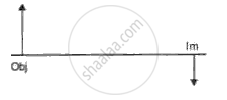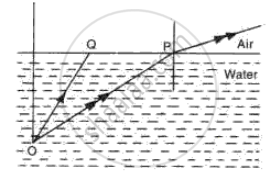Advertisements
Advertisements
Question
A ray of light incident on a lens parallel to its principal axis, after refraction passes through or appears to come from ______.
Options
Its first focus
Its optical entre
Its second focus
The centre of curvature of its second surface
Solution
A ray of light incident on a lens parallel to its principal axis, after refraction passes through or appears to come from its second focus.
APPEARS IN
RELATED QUESTIONS
What is a lens?
A ray of light incident parallel to the principal axis of a lens, passes undeviated after refraction.
In the following diagram ., the object and the image formed by the respective lenses are shown. Complete the ray diagram, and locate the focus. Find the focal length of the lens.

In the following diagram , the object and the image formed by the respective lenses are shown. Complete the ray diagram, and locate the focus. Find the focal length of the lens.

Fig. shows two rays of light Op and OQ coming from an object at the bottom of a pond, incident on the water surface.

(a) Mark on the diagram
(i) The angle of incidence of ray OP,
(ii) The angle of refraction of ray Op,
(iii) The position of image of the object as seen from above.
(iv) An approximate path of the ray OQ.
(b) Explain, why do the rays of light change directions on passing from water to air.
(c) A fish in water sees everything outside the water by rays of light entering its eye in a small cone of light. Draw a diagram and explain how does this happen.
How will you differentiate between a convex and a concave lens by looking at a printed page?
State the nature and position of the object on the principal axis to obtain a real and magnified image.
When does a ray of light falling on a lens pass through it undeviated?
In the following diagram, L1 and L2 are the two convex lense placed at separation equal to the sum of focal lengths of the two lenses. A and B are the two rays of light incident on the lens L1. Complete the path of rays till they emerge out of the lens L2.

What principles have you used in completing the diagram?
